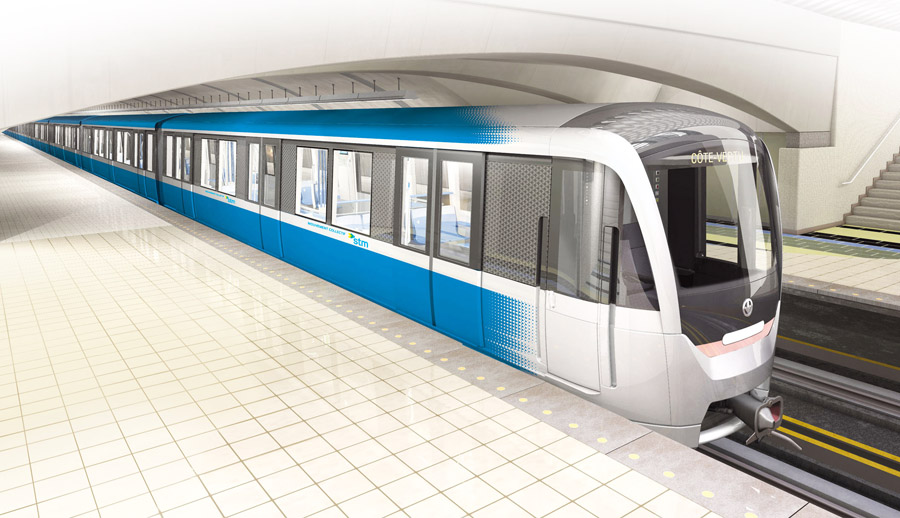On Sept. 21 and 22, the Societé de Transport de Montreal (STM) displayed a full-sized model of Montreal’s upcoming metro trains, named “Azur,” on McGill College Ave. The exhibit was part of “Go Green,” which was held to promote public transportation as well as preview World Car-Free Day, an event held by the STM every Sept. 23 since 2003.
The provincial government granted the contract for 468 new metro cars to the Bombardier-Alstom consortium in Oct. 2010, bypassing the normal bidding process. According to a statement from Quebec Transport Minister Pierre Moreau, the project is expected to generate nearly $400 million in net value added to Quebec’s gross domestic product.
According to Marianne Rouette from STM public affairs, the new metro cars will be delivered beginning in March 2014 at a rate of one train per month, with an expected completion date of Sept. 2018.
“The new “Azur” metro trains will be available [for passenger use]on the Orange line as of Jan. 2015,” Rouette said in French.
The current metro fleet has been in use since 1966—when the metro was first unveiled—and carries an average of 850,000 passengers every weekday. The new metro trains are expected to last a minimum of 40 years.
The metro cars’ new design features larger doors to facilitate the flow of passengers, as well as the possibility of passenger circulation between the metro cars. According to the STM, the latter feature allows for an increase of eight per cent capacity in the metro.
The interior lighting of the metro cars has also been modified, now providing indirect lighting and LED accent lights. A signal built into the doorframes lights up neon green to warn passengers when doors are about to close.

According to Rouette, the design of the new metro cars incorporated feedback from online surveys accessed by over 24,000 commuters, in addition to mechanics, engineers, and other metro staff.
Some students said they appreciated the chance to walk through the model of the updated metro cars.
“I liked the new metro train—it is very clean and new and it considers a variety of [needs], such as those of handicapped people,” Hannah Aronoff, U3 Latin American studies, said.
Although the new metro trains provide open spaces to accommodate wheelchairs, strollers, and bicycles, some critics have noted that many metro stations still do not have elevators—which prevents certain users from accessing metro stations in the first place.
The current design includes two fold-up seats in each car and 28 fixed seats. Aronoff noted that the design could have made better use of the space by incorporating more fold-up seats, which would increase the seating space while remaining adaptable to universal accessibility requirements if needed.
Roxane Kar, a student visiting Montreal, praised the ergonomic seats.
“The seats are really comfortable—they don’t look that comfortable, but they really are,” Kar said. “Also, the seats stayed plastic, which is good, because when they are not plastic, they get really gross.”









